This guest post is from Danny Kalkhoven (you can find more about him on his website or on Instagram).
Danny is very passionate about pinhole photography and he produces beautiful images with them, but he particularly enjoy working with the anamorphic camera.
He kindly agreed to write a few words about what he knows and likes about this fabulous mean.
“My first encounter with anamorphic pinhole cameras was when I noticed some very particular images on some pinhole forums. What is this, what has happened here?
After some research I found it was the produce of an anamorphic camera: the film is rolled up inside the camera and the pinhole is on the axis of the cylinder formed by the film. That is the ”simple” explanation, but it doesn’t help you much further.
When you see such a camera for the first time, it is even more puzzling: how does it work, how does the film receive the image? And seeing the inside of the camera doesn’t always help.
The film is wrapped on a circular path around the pinhole, the sensitive layer is on the inside. Here is a picture of the inside, the white line is the film path, and the yellow dot is the pinhole position. Crazy, isn’t it?
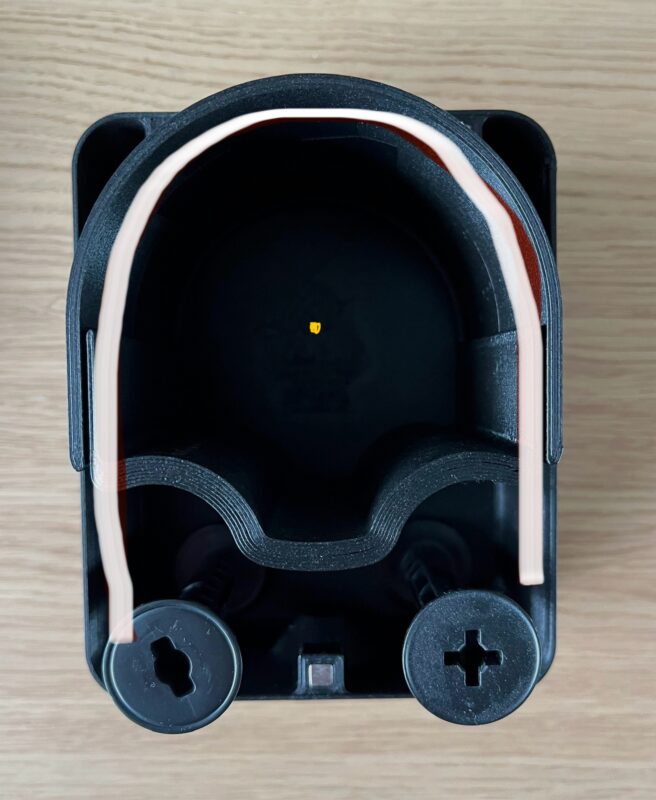
The images produced by this cameras are fantastic, in my opinion. They are mind-boggling, distorted, and sometimes a kind of upside down. They remind me of the Dutch graphic artist MC Escher, take a look at his works like “Up and down” or “House of stairs”.
OK, now I want one. There were several commercial suppliers of these cameras throughout the years, like the very expensive Abelson scope which was out of reach for my budget. But there are also some makers in the world who produce budget-friendly anamorphic cameras, the best known to me are Vermeer pinhole cameras from Poland, and MIA pinhole cameras. I now have two anamorphic cameras: one made out of wood and one is 3D printed.
OK, so let’s go out and have some fun with them. It took some experimenting and a few film rolls to master these cameras, but only roughly. You can never fully master these machines, because these cameras surprise us with the magical way that they capture the world. But that is part of the fun.
This is a type of camera that does NOT capture what is in front of it, but it has a kind of doughnut shaped view around that. So in order to get the subject in the picture, you have to point the camera at an angle above or beside it.
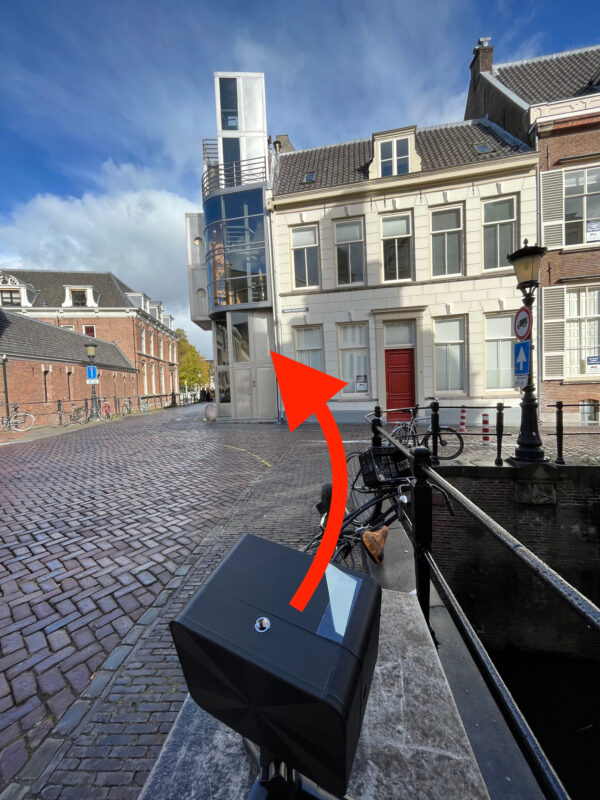
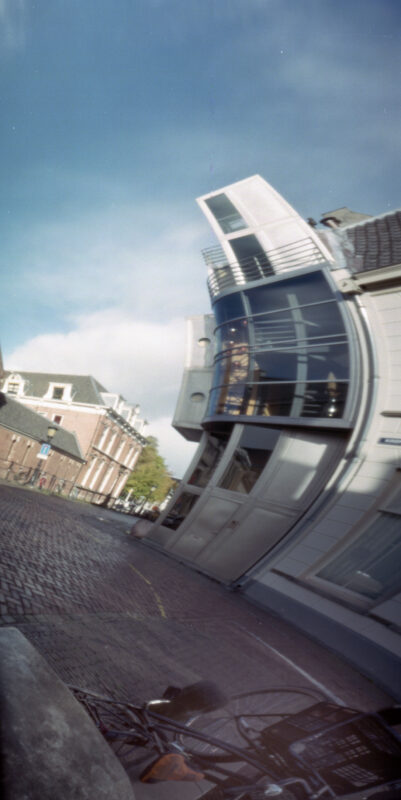
Sometimes you manage to get the subject in the picture, and then the magic happens. Buildings are distorted, the camera sweeps an image from your feet to over your head, and the world is shown in quite a different way.
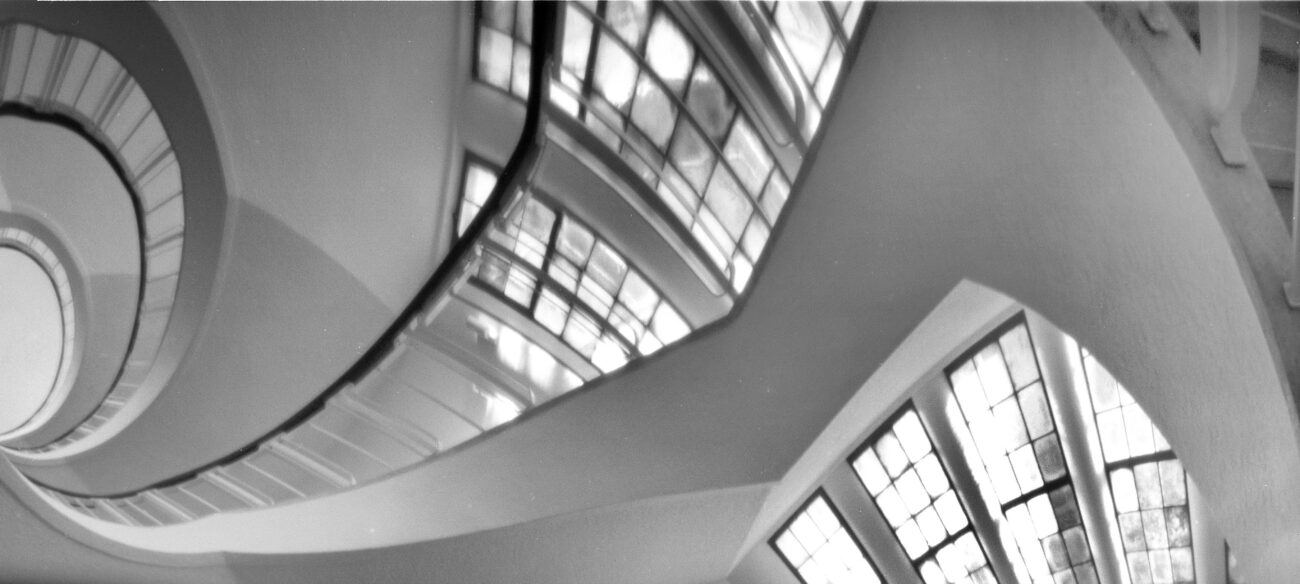
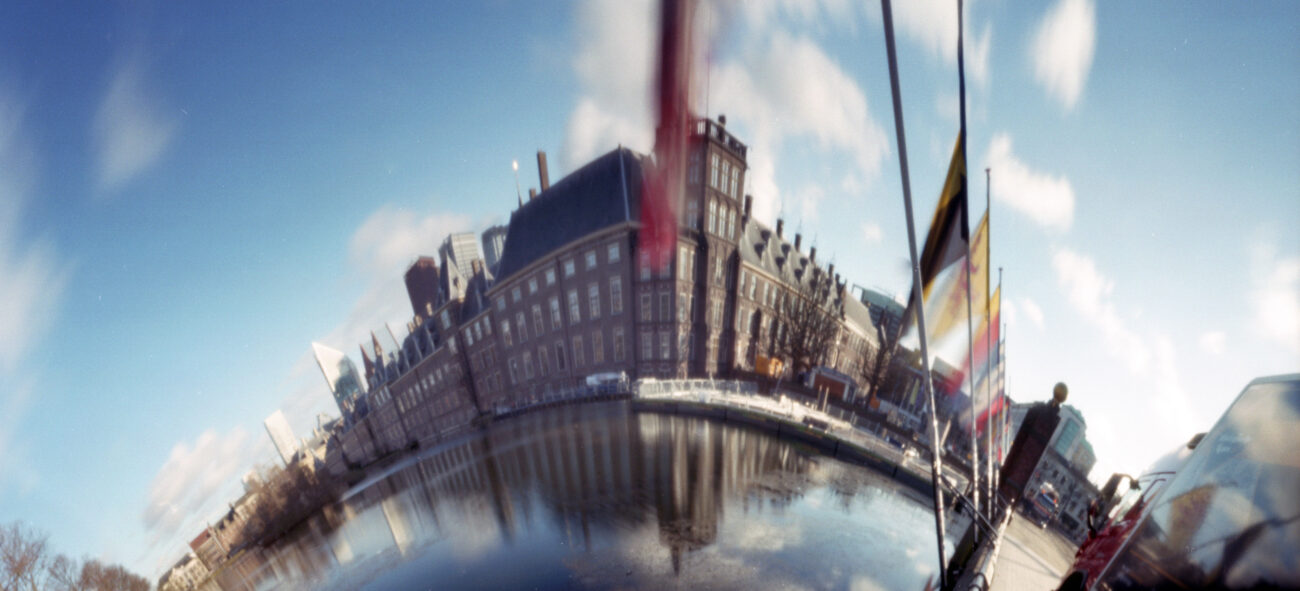
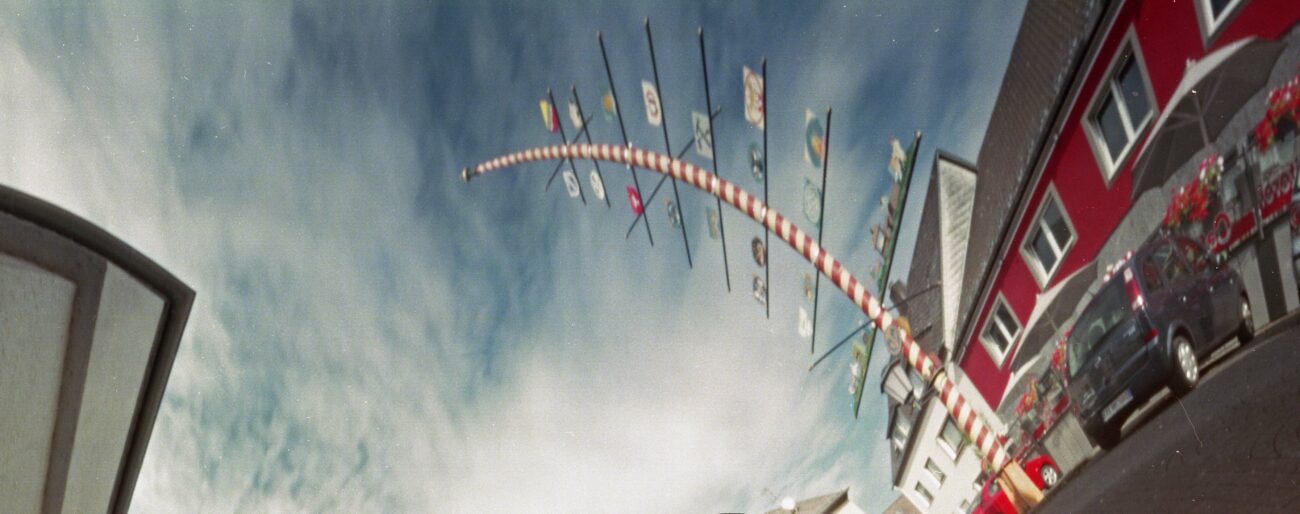
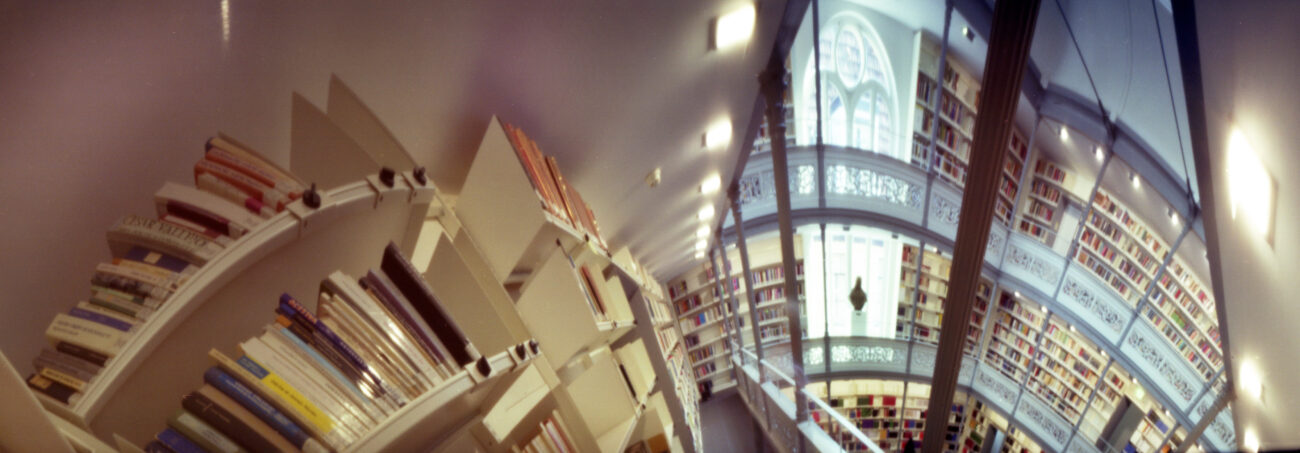
So: if you want something special, and are not afraid to experiment, try an anamorphic pinhole camera!”
I would like to thank Danny for his exhaustive article and for his beautiful pictures. I really enjoy receiving articles from the MIA users and I am sure many of you enjoy reading them, so keep them coming! If you would like to feature on the blog, please get in touch.
